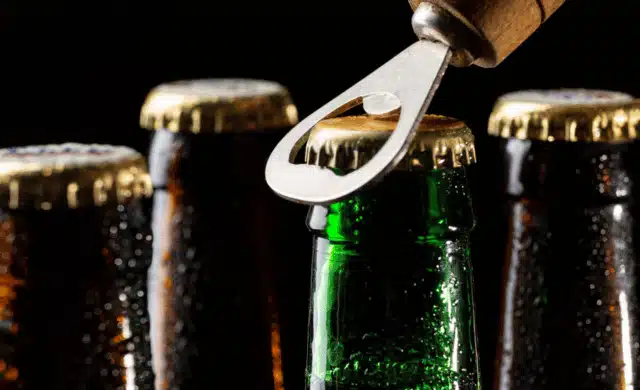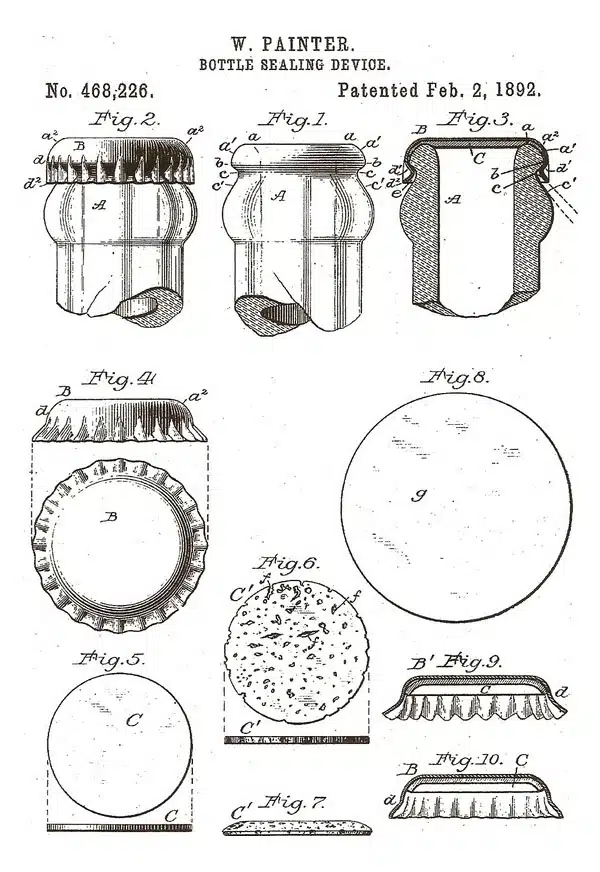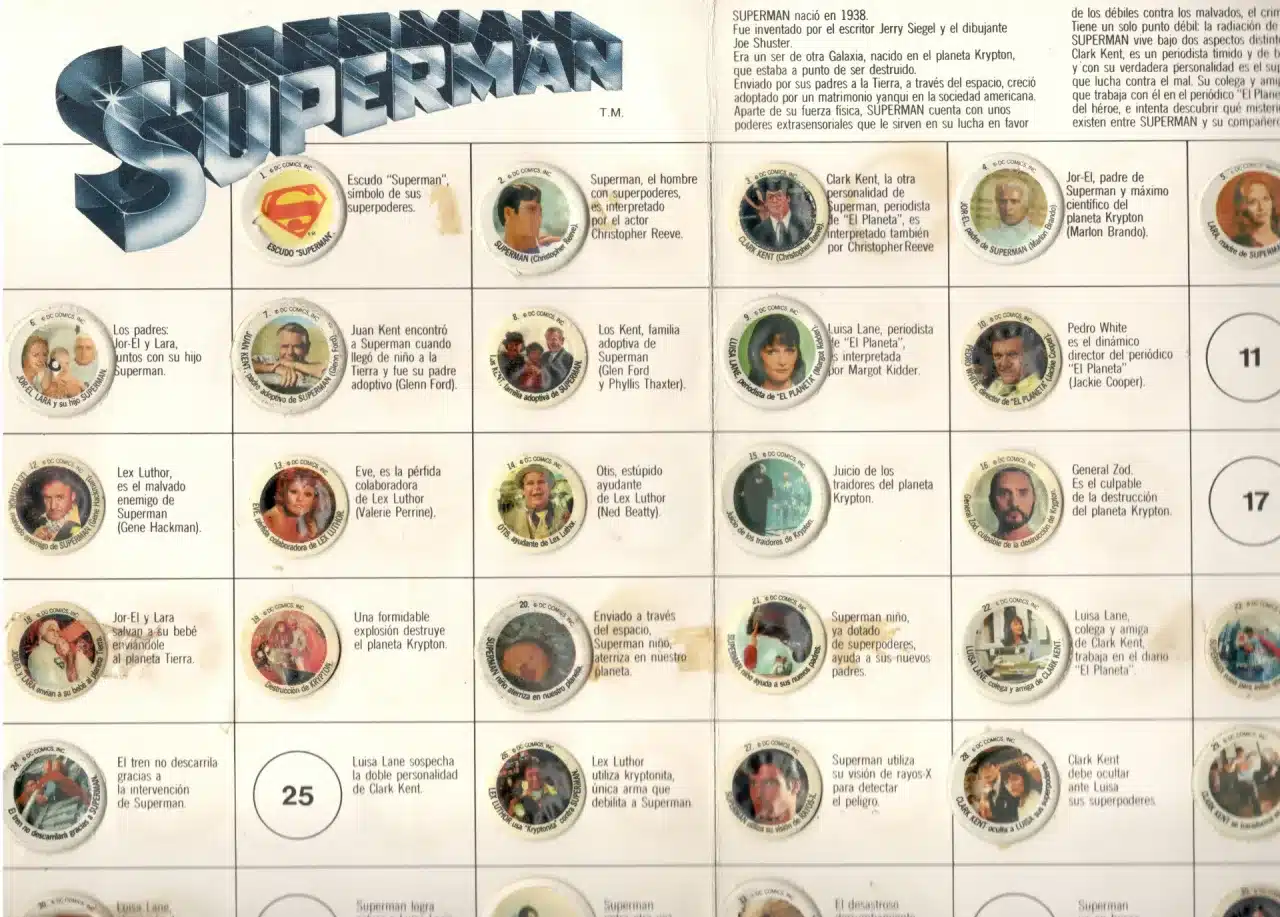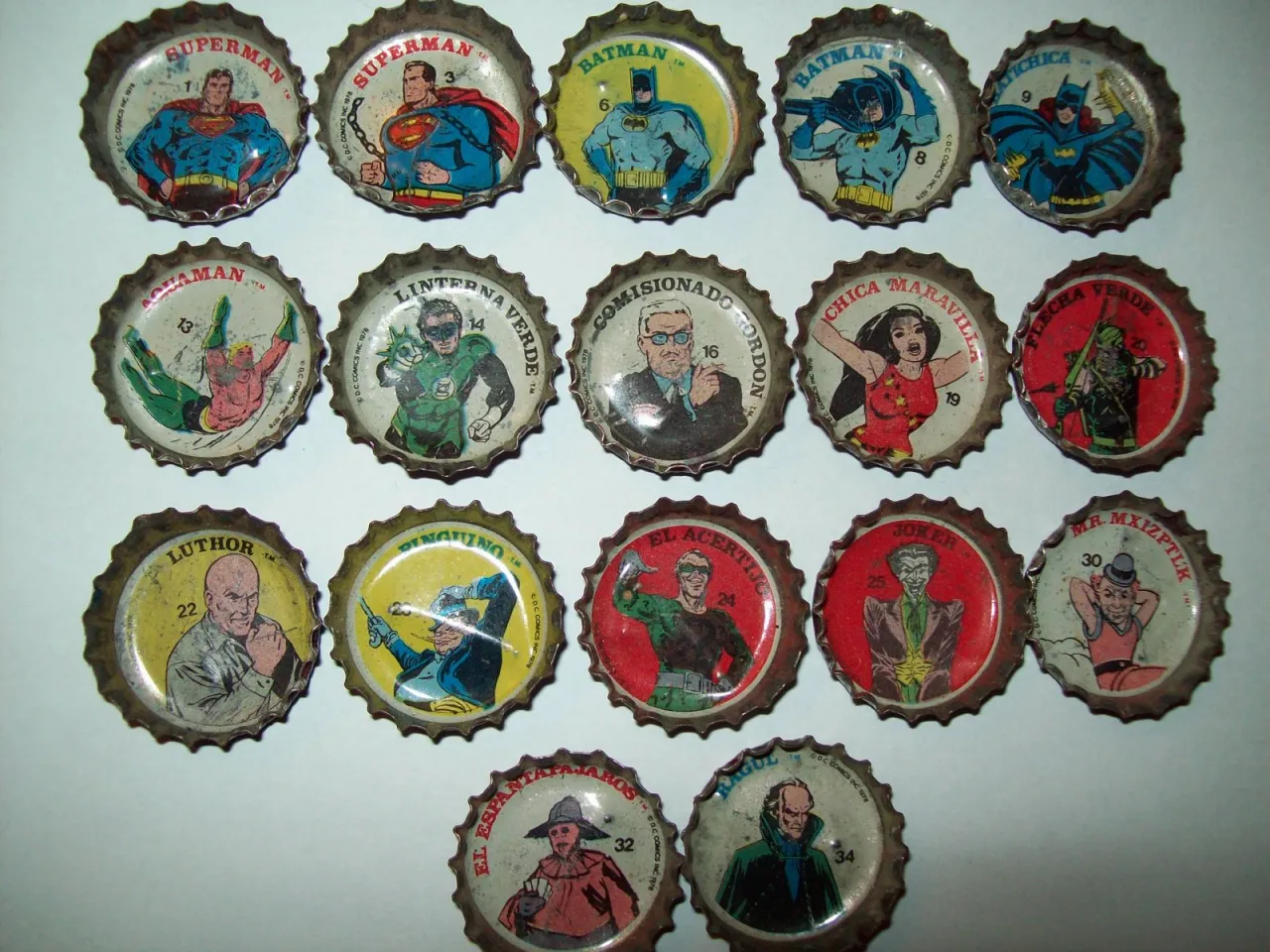
20 Aug Bottle caps: from the cap to marketing
Bottle caps – a simple and successful invention
In 1892 William Painter, an Irish engineer, filed the patent for the crown cap that we now recognize as the most common means of preserving beer and soft drinks in glass bottles.
Prior to that date, beer bottles, like many other carbonated bottles, were sealed with other systems such as mechanical closures, which made bottle production and handling more difficult.
The original design has changed little since its creation: the metal part was separated from the glass by a thin sheet of cork that was eventually replaced by PVC, the length of the skirt has been shortened a little and from 24 pleats it has gone to 21. Already back in the 60’s, a twist-off version was introduced that allowed opening a bottle without the need of an opener, simply by twisting the bottle cap.
The popularity of the invention was such that, just 30 years after its invention, Painter had factories on every continent and his company dominated half of the world market for this product.

Source: El Jardín del Lúpulo
Bottle caps: a branding and advertising element for brands
Bottle caps have evolved into an element used to build the personality of the product and consequently of the brand, as well as to convey messages.

Source: Puromarketing, 2023
They have proven to be a very useful element due to their wide diffusion and visibility. Many soft drink brands have used the design of their bottle caps to communicate product promotions, launch new flavors and formats or to sponsor a sporting event, contest, movie or television program.
Coca-Cola is one of the brands that has used this element the most. In 1930 it launched one of the most successful designs promoting the 1936 Berlin Olympic Games, presenting the names and countries of the athletes participating in the Olympics – a promotion with worldwide success that aroused the interest of all kinds of collectors.
From marketing to collecting
Collecting has generated a new interest for an element that was initially intended only to cover a bottle, giving it a universal dimension.
Small images can be printed on the inner plastic film of the bottle cap, which opens up this new use for collecting. In some countries they are called figures, stamps or stickers that can be detached and pasted into albums.
For example, in 1978 Coca-Cola created with DC Comics a sticker album to promote the Superman movie starring Christopher Reeve.

Source: Puromarketing, 2023
The soft drink brand PepsiCo has also used bottle cap designs to promote events and social causes around the world.
Like Coca-Cola, in 1980 Pepsi also launched collections of bottle caps related to comic books and superheroes of the time in different countries. The series featured images of popular superheroes, such as Superman, Batman, Spider-Man, Hulk and Flash Gordon and its collection of superhero bottle caps became a hit with children and collectors.

Sourc: Puromarketing, 2023
Bottle caps with stickers or images of athletes or soccer teams were also a popular form of collectibles that have been used for decades to promote sports and teams.
These bottle caps originated in the 1920s in Europe, when manufacturers began printing images of soccer players and other athletes on the caps of their products. Over time, the images became more detailed and were printed on paper rather than directly on the caps. In the 1950s, bottle caps with stickers became a popular form of collectibles around the world, especially in Europe and Latin America.
For example, in the 1970s, the soft drink brand Kas launched a bottle cap series called “Futbolista” (Soccer Player), which featured images of soccer players from Spanish teams such as Real Madrid, FC Barcelona and Atletico Madrid. The series included more than 200 different bottle caps.
In the 1980s, the soft drink brand Pepsi launched a bottle cap series called “Campeonato Nacional de Liga” (National League Championship) which featured images of the Spanish soccer league teams. The series included more than 100 different bottle caps. The Coca-Cola soft drink brand also launched a bottle cap series called “Estrellas del Fútbol” (Soccer Stars), which featured images of the most famous soccer players of the time, such as Diego Maradona and Michel Platini.
At Rieusset, we are specialists in the printing of flexible packaging and labels for food and drinks; we know the importance of all packaging elements in the creation of brand identity and their potential for communicating events, promotions and sponsorships.
If you are thinking of improving the design of your product labeling, you can count on our team to advise you. Contact us – we will be happy to help you define how to use each of the elements of your packaging to improve communication and interaction with your consumers.
| We Manufacture: | Meet Rieusset: |


